Resident Crews of Salyut 7
![]()
Salyut 7 |
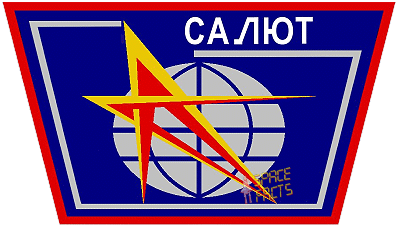 |
![]()
Crew, launch- and landing data
| No. | Nation | Surname | Given names | Position | Spacecraft (launch) |
Launch date |
Launch time |
Spacecraft (landing) |
Landing date |
Landing time |
Mission duration |
Orbits |
| 1 | Vasyutin | Vladimir Vladimirovich | Commander | Soyuz T-14 | 17.09.1985 | 12:38:52.084 UTC | Soyuz T-14 | 21.11.1985 | 10:31:00 UTC | 64d 21h 52m 08s | 1027 | |
| 2 | Savinykh | Viktor Petrovich | Flight Engineer | Soyuz T-13 | 06.06.1985 | 06:39:51.932 UTC | Soyuz T-14 | 21.11.1985 | 10:31:00 UTC | 168d 03h 51m 09s | 2661 | |
| 3 | Volkov | Aleksandr Aleksandrovich | Research Cosmonaut | Soyuz T-14 | 17.09.1985 | 12:38:52.084 UTC | Soyuz T-14 | 21.11.1985 | 10:31:00 UTC | 64d 21h 52m 08s | 1027 |
Backup Crew
| No. | Nation | Surname | Given names | Position |
| 1 | Viktorenko | Aleksandr Stepanovich | Commander | |
| 2 | Aleksandrov | Aleksandr Pavlovich | Flight Engineer | |
| 3 | Saley | Yevgeni Vladimirovich | Research Cosmonaut |
Expedition Report
|
Launch from the Baikonur Cosmodrome and
landing 180 km southeast of Dzheskasgan. Following a two-day solo flight Soyuz T-14 docked with Salyut 7 on September 18, 1985. Main goal was a partly exchange of the current resident crew (Vladimir Dzhanibekov). Soyuz T-14 transported Commander Vladimir Vasyutin, Flight Engineer Georgi Grechko and Research Cosmonaut Aleksandr Volkov to the Salyut 7 orbital station. After Georgi Grechko had inspected the repairs and condition of the station, he and Vladimir Dzhanibekov, from Soyuz T-13, returned to earth aboard Soyuz T-13 on September 26, 1985. The crew received Kosmos 1686 on October 02, 1985. This was a modified TKS spacecraft with the military 'star wars' tracking experiments mounted in a stripped-down VA capsule. The crew was to conduct these experiments, and conduct spacewalks with application to future space stations. Kosmos 1686 contained 4,500 kg (9,900 lb) of freight, including large items like a girder to be assembled outside Salyut 7, and the Kristallizator materials processing apparatus. All landing systems were removed from the VA re-entry capsule and replaced with military optical sensor experiments (infrared telescope and Ozon spectrometer). It burned up in the atmosphere and together with the Salyut 7 station over Argentina on February 07, 1991 at 04:00 UTC. It re-entered with unused 3 m diameter recoverable capsule of 2-3,000 kg mass, solid rocket motors, and cesium sensors. Photography of Earth surface, observation of mechanical and electronical behavior of enlarged space station (Kosmos 1686) was done. The crew conducted military experiments with the Kosmos-1686 module. A premature return to Earth was needed because of a seriously illness of Vladimir Vasyutin. He was suffering from a very bad urinary tract infection and had a high fever as well. It took nearly six weeks of antibiotics once back on the ground before he was better. Other sources said that the mission was cut short due to an incapacitating psychological condition developed by Vladimir Vasyutin. Experiments and tests for the planned space station Mir and EVA's were not accomplished. The Soyuz spacecraft is composed of three elements attached end-to-end - the Orbital Module, the Descent Module and the Instrumentation/Propulsion Module. The crew occupied the central element, the Descent Module. The other two modules are jettisoned prior to re-entry. They burn up in the atmosphere, so only the Descent Module returned to Earth. Having shed two-thirds of its mass, the Soyuz reached Entry Interface - a point 400,000 feet (121.9 kilometers) above the Earth, where friction due to the thickening atmosphere began to heat its outer surfaces. With only 23 minutes left before it lands on the grassy plains of central Asia, attention in the module turned to slowing its rate of descent. Eight minutes later, the spacecraft was streaking through the sky at a rate of 755 feet (230 meters) per second. Before it touched down, its speed slowed to only 5 feet (1.5 meter) per second, and it lands at an even lower speed than that. Several onboard features ensure that the vehicle and crew land safely and in relative comfort. Four parachutes, deployed 15 minutes before landing, dramatically slowed the vehicle's rate of descent. Two pilot parachutes were the first to be released, and a drogue chute attached to the second one followed immediately after. The drogue, measuring 24 square meters (258 square feet) in area, slowed the rate of descent from 755 feet (230 meters) per second to 262 feet (80 meters) per second. The main parachute was the last to emerge. It is the largest chute, with a surface area of 10,764 square feet (1,000 square meters). Its harnesses shifted the vehicle's attitude to a 30-degree angle relative to the ground, dissipating heat, and then shifted it again to a straight vertical descent prior to landing. The main chute slowed the Soyuz to a descent rate of only 24 feet (7.3 meters) per second, which is still too fast for a comfortable landing. One second before touchdown, two sets of three small engines on the bottom of the vehicle fired, slowing the vehicle to soften the landing. |
Photos / Graphics
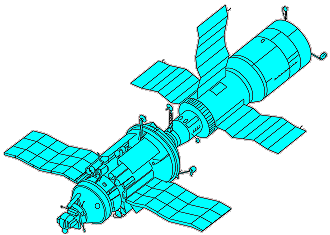 |
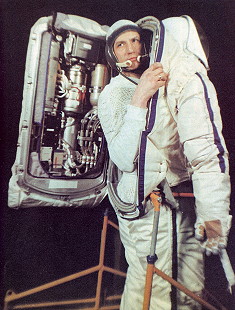 |
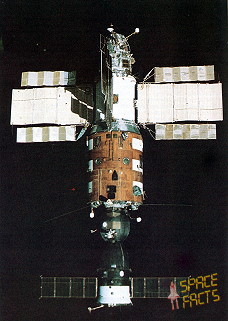 |
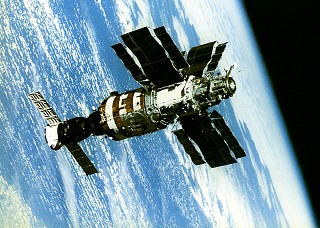 |
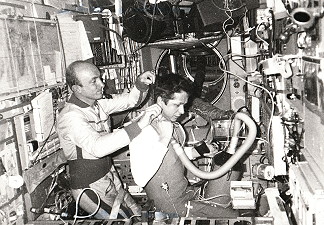 |
| © |  |
Last update on April 30, 2020.  |
 |